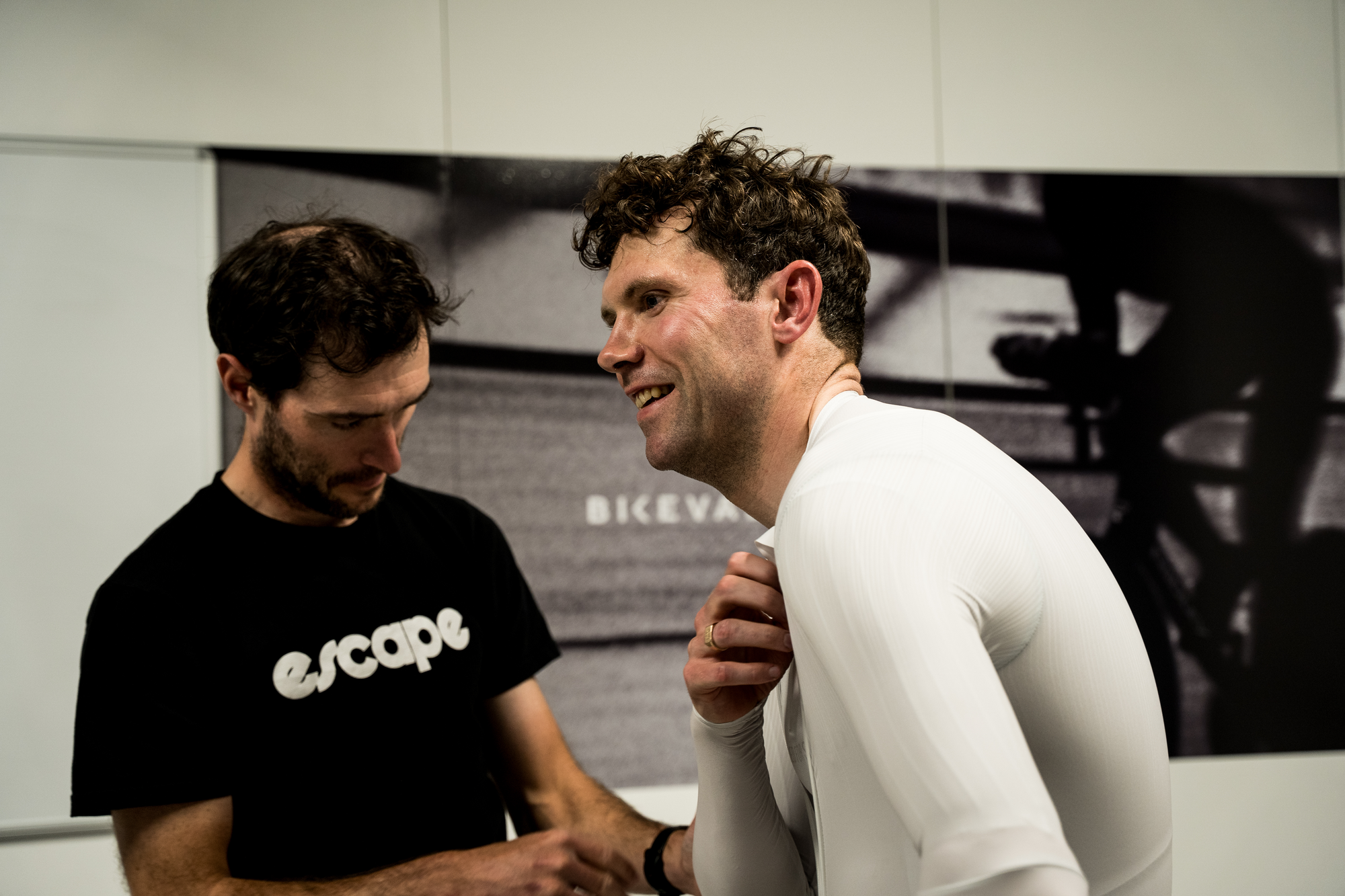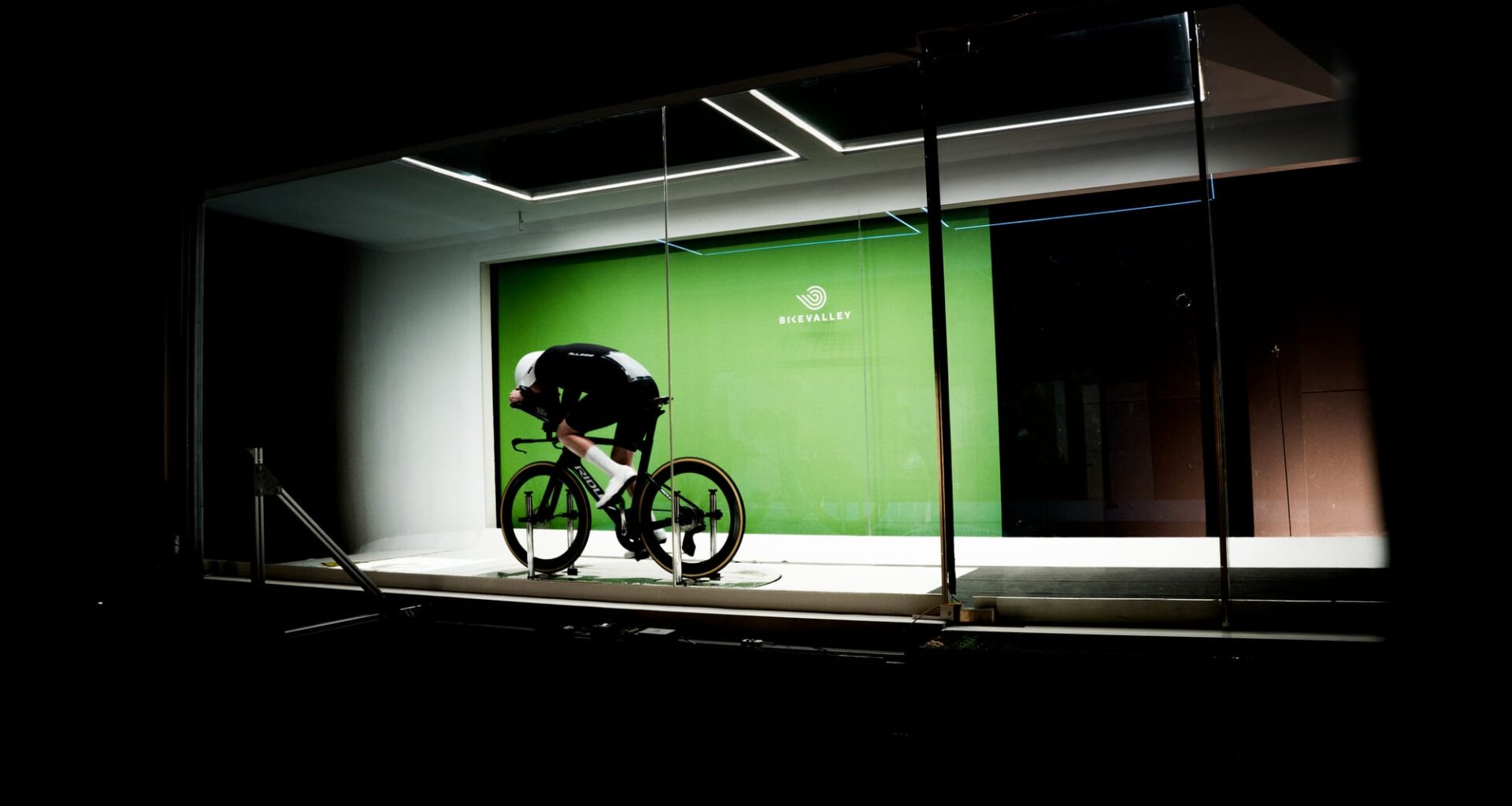
Ronan Mc Laughlin, Dries Grosemans, Sean Rowe, Jerome Rafferty, Caroline Kerley
The consensus was clear: Marcus Christie was past his prime. At 34, despite achieving almost everything there is to achieve in Irish time trialing, he still missed the two accolades that mattered most. Worse, the sport had moved on, leaving him behind. While he still possessed the scary power numbers, modern sports science, especially aero wizardry, had seen others catch up and pass him.
Marcus fell in love with time trialing the day Tommy Evans from Cycling Ireland’s Talent ID program sat the injured school runner on a Wattbike.
What followed was two decades of dominance: national records at 25, 50, and 100 miles, appearances for Ireland at U23 and Elite World Championships, and for Northern Ireland at the Commonwealth Games. Marcus did practically everything there was to do in domestic time trialing, except claim the two prizes he most desired: the elite National Championship title and the national ’10’ record.
Those goals still drive – even perhaps haunt – him, but time and technology seemed to have conspired against him. His brute-force style is no longer compatible with the aerodynamics and optimisation problem the discipline has become, and thus it’d be easy to assume his greatest ambitions would remain out of reach.
But assumptions, like records, are made to be tested.
This is a story of layering the Performance Process onto raw talent. It started with the goal of applying cutting-edge optimisation and process to a rider with a massive engine. But ultimately became a story of choosing process over outcome, even when injury and setbacks threaten to derail everything.
At its heart, this is about friendship. A group of mates navigating the peaks and valleys of elite sport together – from wind tunnel breakthroughs to setbacks, from progress to the harsh reality that sometimes your best isn’t enough. This is Marcus Christie’s performance process.
 Marcus has entered the chat
Marcus has entered the chat
Marcus is a purist, a traditionalist’s time trialist. I’d liken him to a helicopter: big, strong, and all power, effectively battering physics into submission. He bemoans the importance of aerodynamics in modern time trialing, and his idol is 1997 vintage Jan Ullrich: tall, skinny, raw power and backward-cap Ullrich. For a decade, Christie has ridden Bradley Wiggins’ old time trial bike, not so much refusing basic aerodynamic adjustments as assuming that he can’t be improved. In other words, not the typical Performance Process listener.
Performance Process: Aero claims exposed & how to spot marketing spin
Aerocoach’s Xavier Disley on how to cut through the aero hype, tricks, testing flaws, and real gains.

Marcus and I go way back, and for as long as we’ve been mates, this is where we’ve butted heads. When the helicopter approach failed, his solution was always: more power! I wanted him to be my marginal gains canvas, a rough diamond we could streamline into the perfect “tester.” But the truth was neither of us was ready. He thought getting aero was cheating, while I was overestimating my knowledge.
But that all changed as this plan came together like many modern endeavours… in a WhatsApp group, late on a Friday night, perhaps with a drink in hand. I can’t recall what sparked the idea, but it gathered momentum quickly. Amidst the usual slagging and banter, the optimisation project Marcus never believed in – and the one I wasn’t ready for – began to take shape.
I think Marcus realised time was running out. The power-overcomes-physics approach was getting him nowhere. He needed to adapt or move on.
This post is for paying subscribers only
Subscribe now
Already have an account? Sign in
Did we do a good job with this story?
👍Yep
👎Nope

